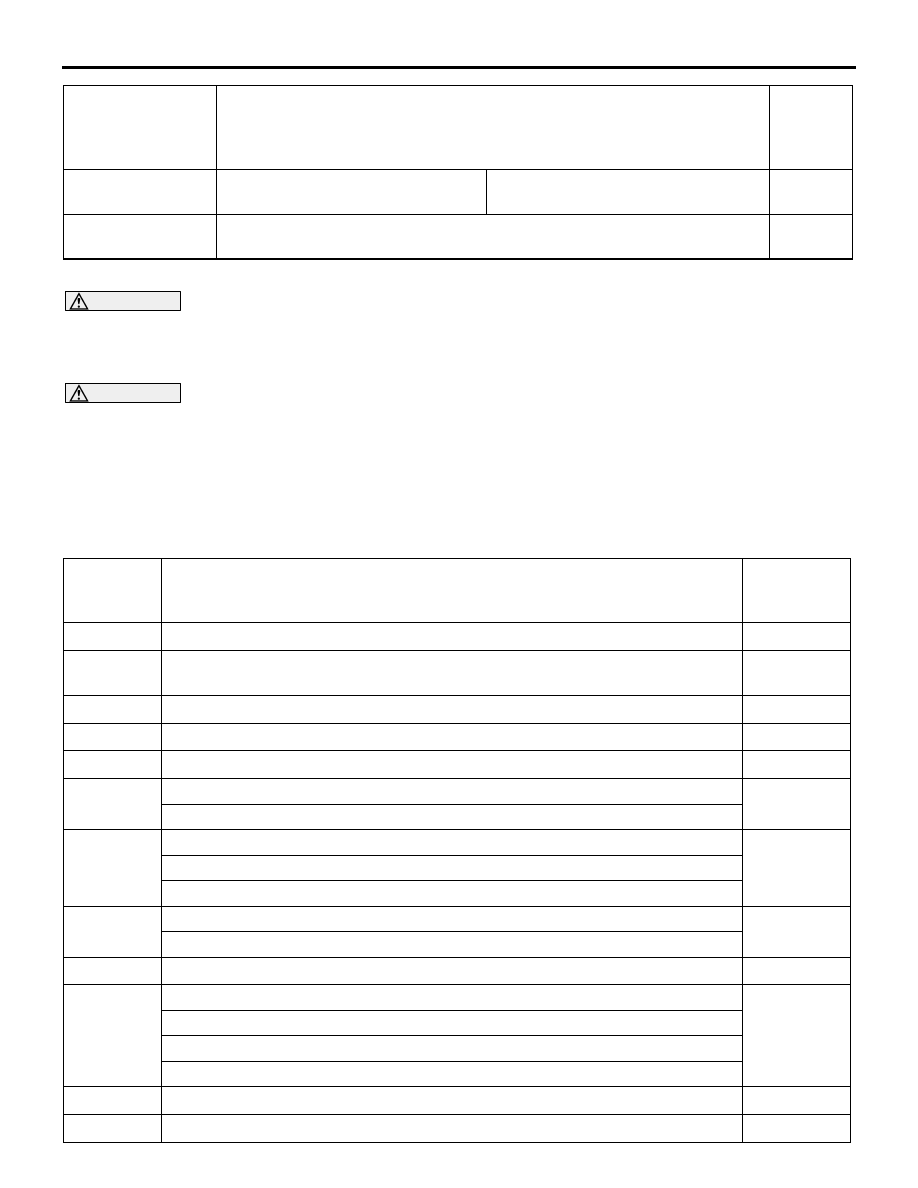Mitsubishi Outlander (2013+). Manual - part 311

TROUBLESHOOTING
MULTIPOINT FUEL INJECTION (MPI)
13A-125
PROBLEM SYMPTOMS TABLE
WARNING
When touching the throttle valve, surely shut off the driving circuits of the throttle valve. In
the event that the throttle valve is operated, a finger might be injured as the result of being
caught by the throttle valve.
CAUTION
During troubleshooting if the ignition switch is turned to ON with the connectors, etc. disconnected,
some diagnosis code may be saved in other system. After the troubleshooting is completed, always
make sure the diagnosis codes of the entire systems. If it is found that some diagnosis codes have
been outputted, erase them.
NOTE: When the racing (2,000 to 5,000 r/min or more) continues on the vehicle stopped with no load during
the specified time or more, the increase in the engine speed might be limited. This comes from the engine
protection and control functions and is not a malfunction.
Cooling
performance
Overheating
The temperature of engine cooling
water is extremely high.
18
ECO mode
indicator
In running, the ECO mode indicator shows nothing.
24
Item
Trouble Symptom
Inspectio
n
Procedur
e No.
Inspection
Procedure
No.
Inspection Item
Reference
Page
1
The communication between M.U.T.-III and engine-ECU is not possible
2
The engine warning lamp does not illuminate right after the ignition switch is
turned the ON position
3
The engine warning lamp remains illuminating and never goes out
4
Starting impossible (starter not operative)
5
Starting impossible (starter operative but no initial combustion)
6
Starting impossible (initial combustion but no complete combustion)
Improper starting (long time to start)
7
Unstable idling (rough idling, hunting)
Improper idling speed (too high or too low)
Engine stalls during idling (die out)
8
The engine stalls when starting the car (pass out)
The engine stalls when decelerating
9
Engine does not revolve up
10
Hesitation, sag
Poor acceleration
Stumble
Surge
11
The feeling of impact or vibration when accelerating
12
The feeling of impact or vibration when decelerating